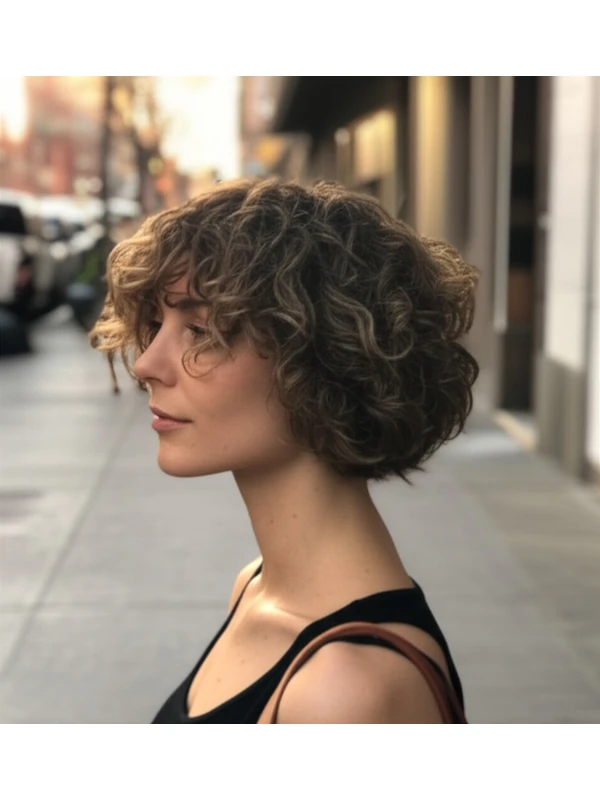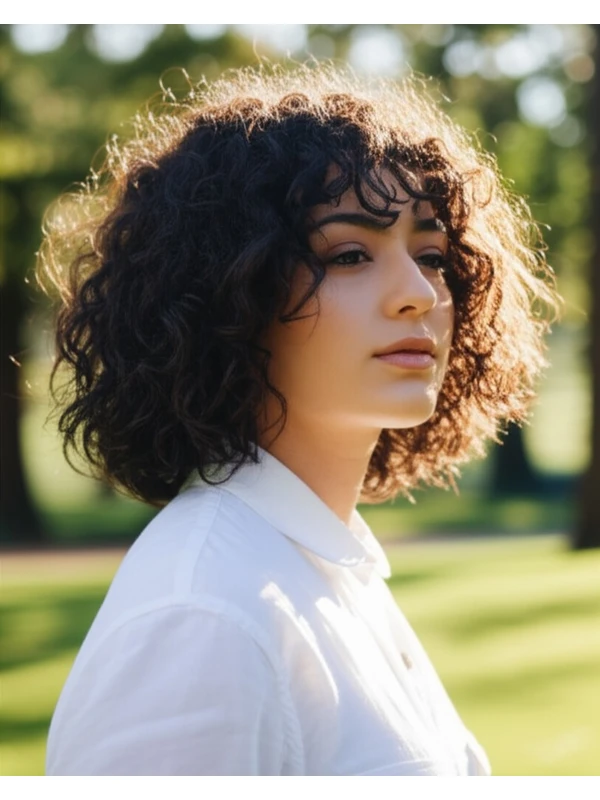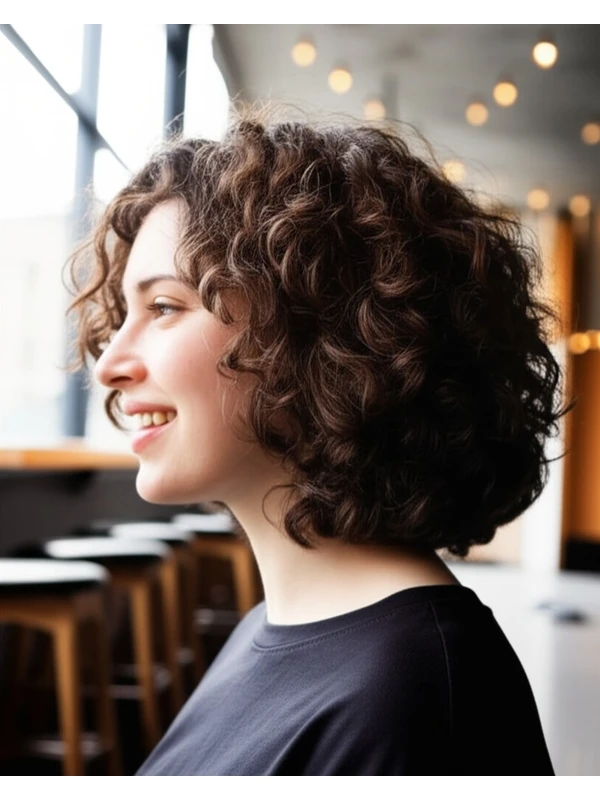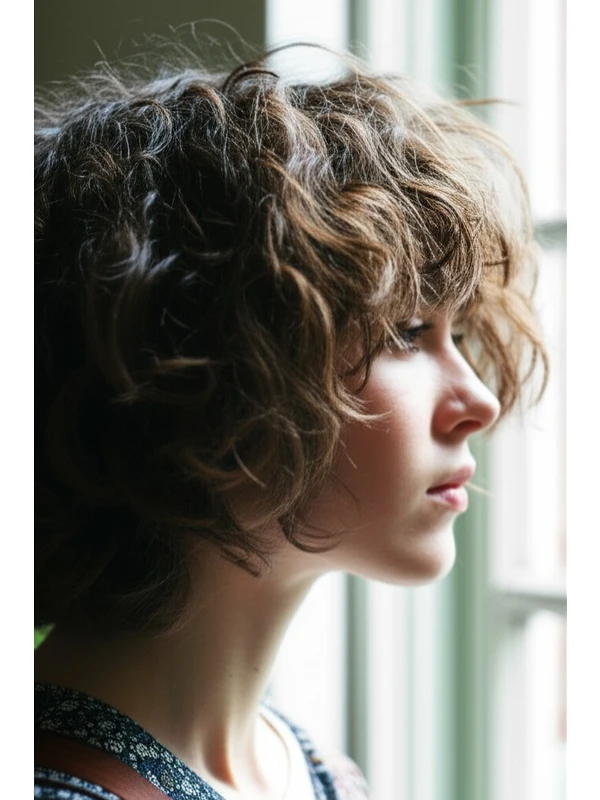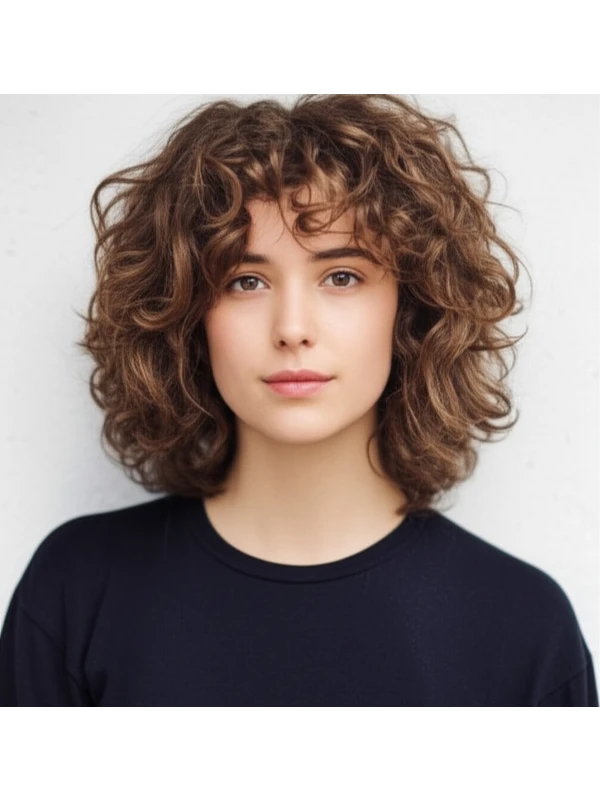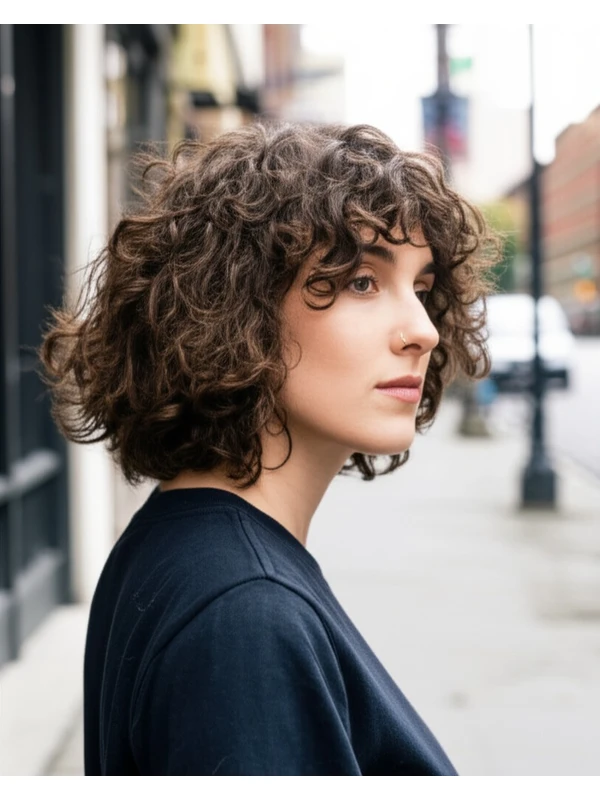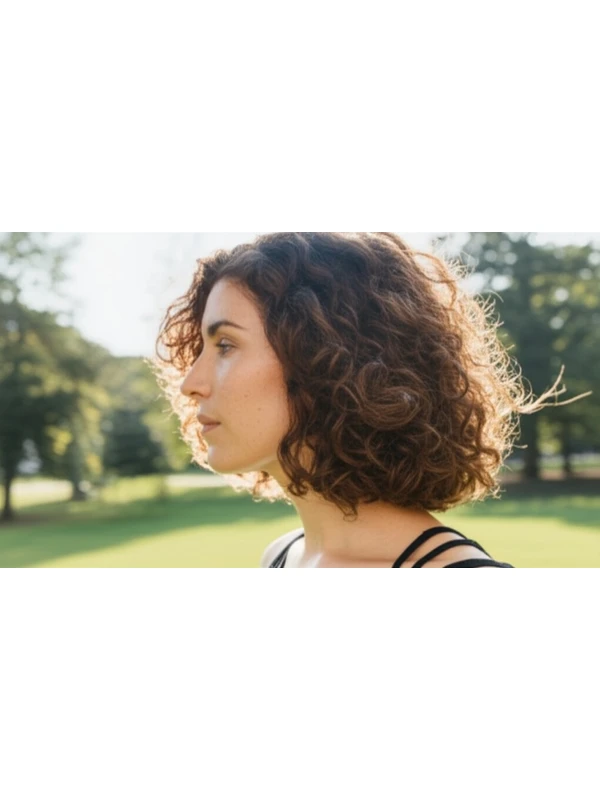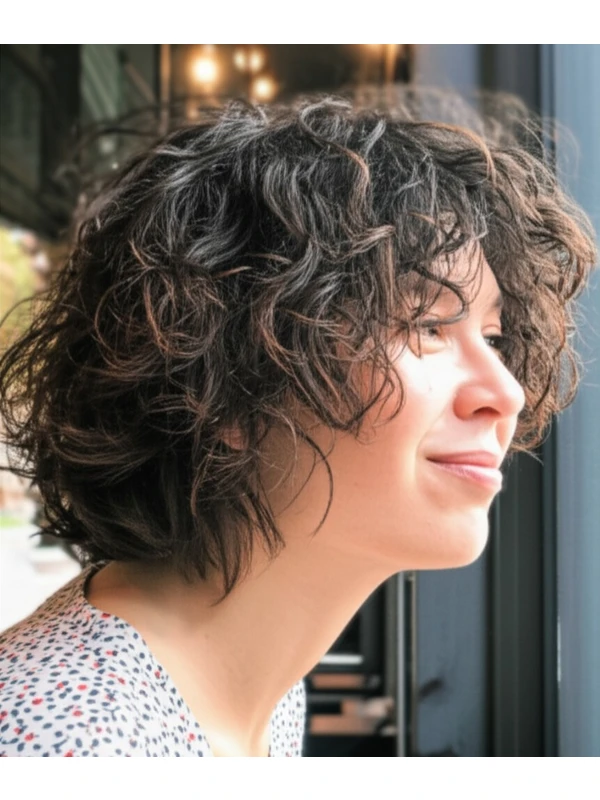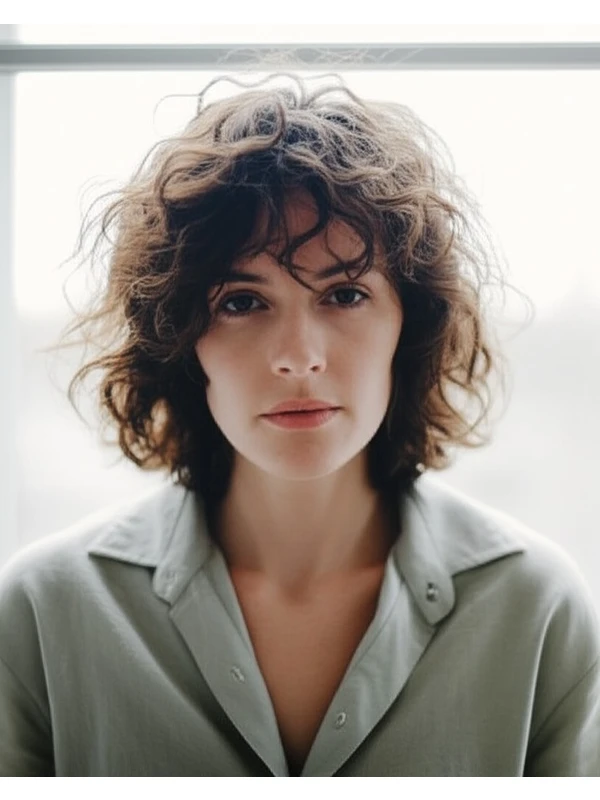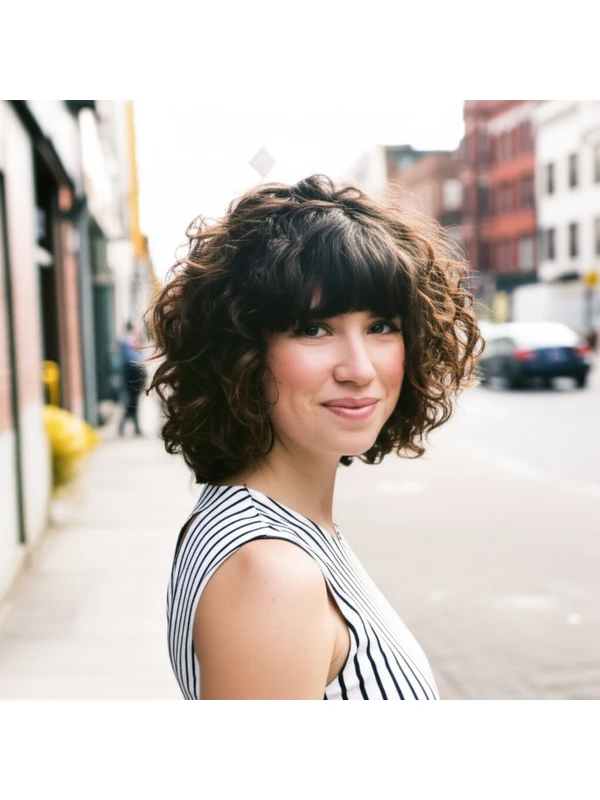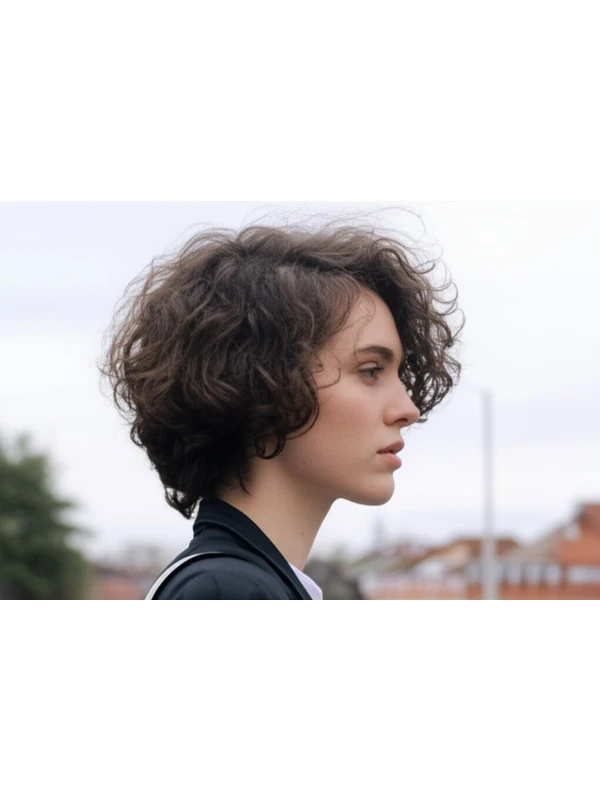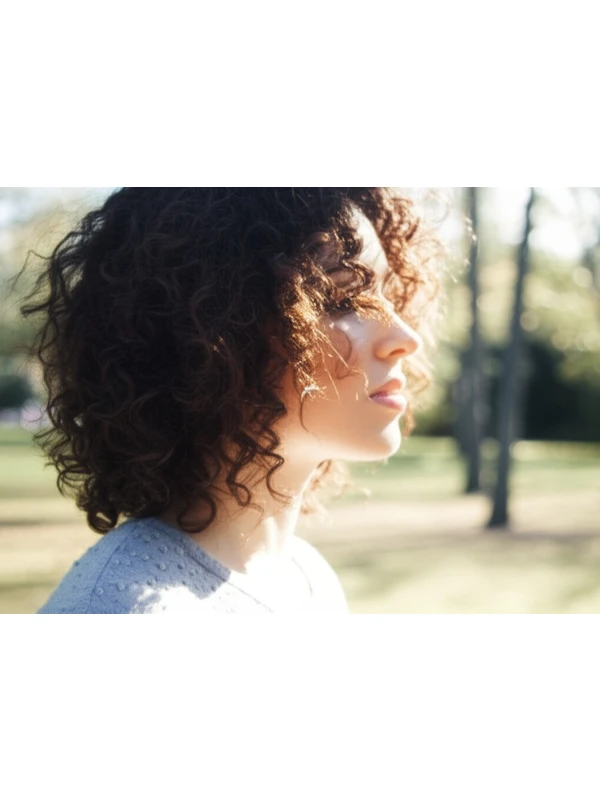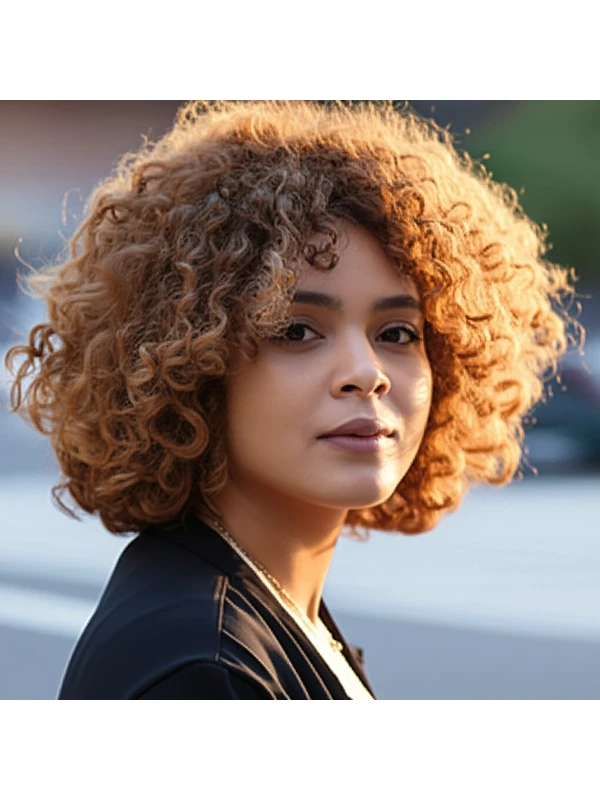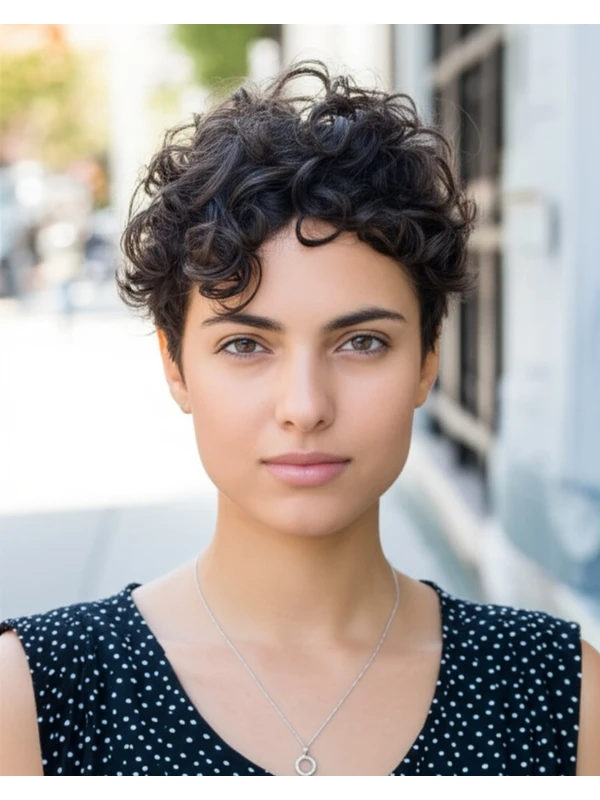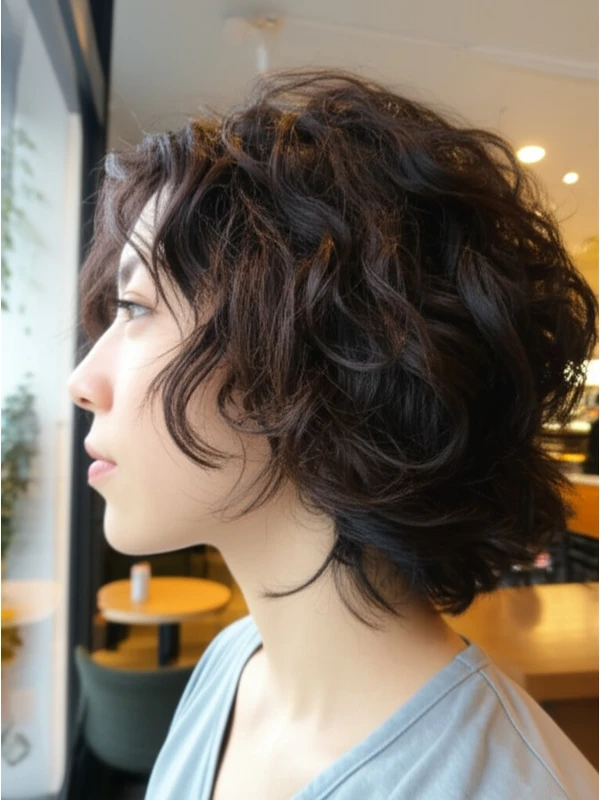#The Curly Shag: Effortless Cool for Every Curl
The curly shag is having a major moment! It’s more than just a trend; it's a versatile style that celebrates natural texture while offering an edgy, modern vibe. This guide will break down everything you need to know about the curly shag – from its history and how it flatters different faces to styling tips and maintenance secrets.
#1) Background & Definition: What is a Curly Shag?
The shag haircut has roots in the 1970s, popularized by icons like Jane Fonda and Farrah Fawcett. The modern curly shag takes that spirit of effortless cool and adapts it for textured hair. It’s characterized by layers – lots of them! These layers are strategically cut to enhance natural curl patterns, creating volume at the crown and a more relaxed feel around the face.
Key Features:
- Heavy Layers: The defining characteristic; creates movement and texture.
- Choppy Ends: Adds an intentionally undone, slightly edgy look.
- Face-Framing Pieces: Softens features and highlights natural curls.
- Volume at the Crown: Creates lift and a youthful appearance.
- Asymmetry (Often): While not always present, many curly shags incorporate subtle asymmetry for visual interest.
Typical Length Ranges: The shag can work from chin-length bobs to long hair that grazes the shoulders or even extends past. The shorter the length, the more dramatic the layers will appear.
Alternative Names: Textured Shag, Curly Layered Cut, Modern Shag (when referring to a curly version).
#2) Face Shape Fit: Finding Your Perfect Angle
The beauty of the shag is its adaptability. However, understanding how it interacts with your face shape can help you optimize the look.
- Oval: Lucky you! The shag complements oval faces beautifully. Almost any length and layer placement will work well. A full fringe (bangs) adds even more balance.
- Round: Shags soften roundness by adding height at the crown and drawing attention upwards. Avoid a blunt, chin-length style which can emphasize width. A side part and longer face-framing pieces are key. Wispy bangs or curtain bangs work well to break up the fullness of the cheeks.
- Square: The shag's softness helps soften angular features. Layers around the jawline will diffuse a strong square shape. Side-swept fringe is particularly flattering.
- Heart: A shag with layers that start higher on the face can balance a wider forehead and pointed chin. Avoid too much volume at the crown, which could exaggerate heart shapes. Curtain bangs are universally flattering.
- Diamond: The shag’s layered texture softens diamond faces by adding width to narrow cheekbones. A fringe (even a wispy one) helps soften the angles of this face shape.
- Oblong: Shags can shorten an oblong face with layers that add width and volume around the sides. A full or blunt fringe will also help visually widen the face.
#3) Body Proportions & Height Guidance: Balancing Your Silhouette
The shag isn't just about your face; it affects how you’re perceived overall!
- Petite: Shorter shags (chin to shoulder length) look best on petite individuals, preventing them from being overwhelmed by too much volume.
- Average Height: Most lengths work well – experiment with what feels most comfortable and suits your style.
- Tall: Longer shags (shoulder-length or longer) can balance a taller frame. Consider adding more layers for extra movement.
- Narrow Shoulders: Layers that add volume at the shoulders will create an illusion of broader shoulders. Side parts also help visually widen the shoulder line.
- Broad Shoulders: Avoid excessive layering directly at the shoulders, as this can accentuate their width. Focus on volume higher up and a more centered part.
- Short Neck: Shorter shags with height at the crown will elongate the neck. Avoid very long layers that hang straight down.
- Long Neck: Longer shags with face-framing pieces soften the appearance of a longer neck.
#4) Works Best With Hair Types & Densities: Texture is Key!
The curly shag thrives on natural texture, but different hair types and densities require slight adjustments.
- Straight/Wavy: While traditionally associated with curls, a shag can work for wavy hair. However, the layers will be less defined unless you add curl-enhancing products or techniques (like pin curling).
- Curly (2A - 3B): This is where the shag really shines! The layers enhance natural bounce and definition.
- Coily (4A - 4C): The shag can create volume and shape in coily hair, but it’s crucial to work with a stylist experienced in cutting coils. Moisture is essential.
- Fine Hair: Shags add the illusion of thickness. Layering removes weight, creating more movement. Be mindful not to over-layer, which can make fine hair look even thinner.
- Medium Hair: The shag looks fantastic with medium density – it’s a very versatile option!
- Thick Hair: Shags are excellent for thinning out thick hair and reducing bulk. More layers will be needed than for finer hair types.
Shrinkage Factor (Curls & Coils): Always factor in shrinkage when discussing length with your stylist. What looks like 10 inches straight may shrink to 6-8 inches when dry! Communicate this clearly.
#5) Styling Variations: From Casual Cool to Evening Glam
The shag is incredibly versatile – here’s how to tweak it for different occasions.
- Sleek vs. Textured: Use a smoothing serum or oil for a sleeker look, or embrace the natural texture with curl-enhancing products.
- Middle vs. Side Part: A middle part creates symmetry and balance; a side part adds softness and asymmetry.
- Fringe Variations: Wispy bangs, curtain bangs, blunt fringe – all work! Consider your face shape when choosing.
- Casual: Air-dry with curl cream for an effortless vibe.
- Office: A slightly more polished look achieved with a diffuser and smoothing serum.
- Evening: Add texture spray or mousse for extra volume and definition; consider pinning back sections for a more formal feel.
#6) Maintenance: Keeping Your Shag Sharp
Regular trims are key to maintaining the shape of your shag.
- Trim Cadence: Every 6-8 weeks is typical, especially with shorter shags or if you want to maintain the choppy ends.
- At-Home Routine: Focus on moisture and definition for curls/coils; lightweight products for finer textures.
- Heat vs. Air-Dry: Minimize heat styling to protect hair health. When using heat, always use a protective product.
- Product Checklist:
- Sulfate-free Shampoo & Conditioner (suited to your hair type)
- Leave-in Conditioner or Cream (for moisture)
- Curl Defining Cream/Gel/Mousse (depending on curl pattern)
- Lightweight Oil (to seal in moisture and add shine)
- Texturizing Spray (optional, for added grit)
- Estimated Daily Styling Time: 15-30 minutes, depending on your hair type and desired look.
#7) Grow-Out Roadmap: Evolving with Your Style
The shag changes dramatically as it grows out.
- Months 1-3: The layers are most defined; the shape is at its sharpest.
- Months 4-6: Layers start to blend, volume may decrease slightly. A trim will refresh the shape and prevent a "blob" effect.
- Maintaining Shape: Regular trims keep the shag looking intentional, not just grown out.
#8) Color Pairings: Enhancing Your Shag's Dimension
Color can elevate your shag!
- Cool Undertones (Ash Blonde, Silver): Create a modern, edgy look.
- Warm Undertones (Honey Blonde, Copper): Add warmth and dimension; particularly flattering for darker hair.
- Low-Commitment Options: Balayage or babylights add subtle highlights without drastic changes. Face-framing money pieces are also very trendy.
#9) Season & Occasion Guide: Adapting to the Moment
- Spring/Summer: Embrace a lighter, airier feel with minimal product and loose waves.
- Fall/Winter: Add texture spray or mousse for more definition and hold against humidity.
- Work: A polished shag achieved with smoothing products and a controlled part.
- Weddings: Romantic curls created with a diffuser and styling cream; consider adding decorative pins.
- Parties: Embrace the edgy vibe with tousled texture and bold accessories.
#10) Cost & Time: Investment in Your Style
- Salon Time: Typically 1.5 – 2.5 hours, depending on hair length and complexity of layers.
- Price Range: Expect to pay a moderate-to-high price for the cut, reflecting the skill required to execute it well.
#11) Pros & Cons: Weighing Your Options
Pros:
- Versatile – works with many face shapes and hair types.
- Adds volume and movement.
- Effortless cool vibe.
- Can be adapted for different occasions.
Cons:
- Requires regular trims to maintain shape.
- Styling can take time, especially for those new to styling curly/coily hair.
- Layers can make fine hair look thinner if not cut correctly.
#12) Salon Consultation Script: Your Guide to Success
Here are some prompts you can use when discussing your shag with your stylist:
- "I love the idea of a shag haircut, but I'm concerned about how it will work with my [face shape - e.g., round face]."
- "Can we focus on adding volume at the crown?"
- “How much shrinkage should I expect?”
- "I want something low-maintenance – what styling techniques would you recommend?"
- "I'm open to a fringe, but I’m not sure which style would suit me best."
- "What color options would complement the shag cut and my skin tone?"
